Introduction To 2D Animation: Everything You Need To Know
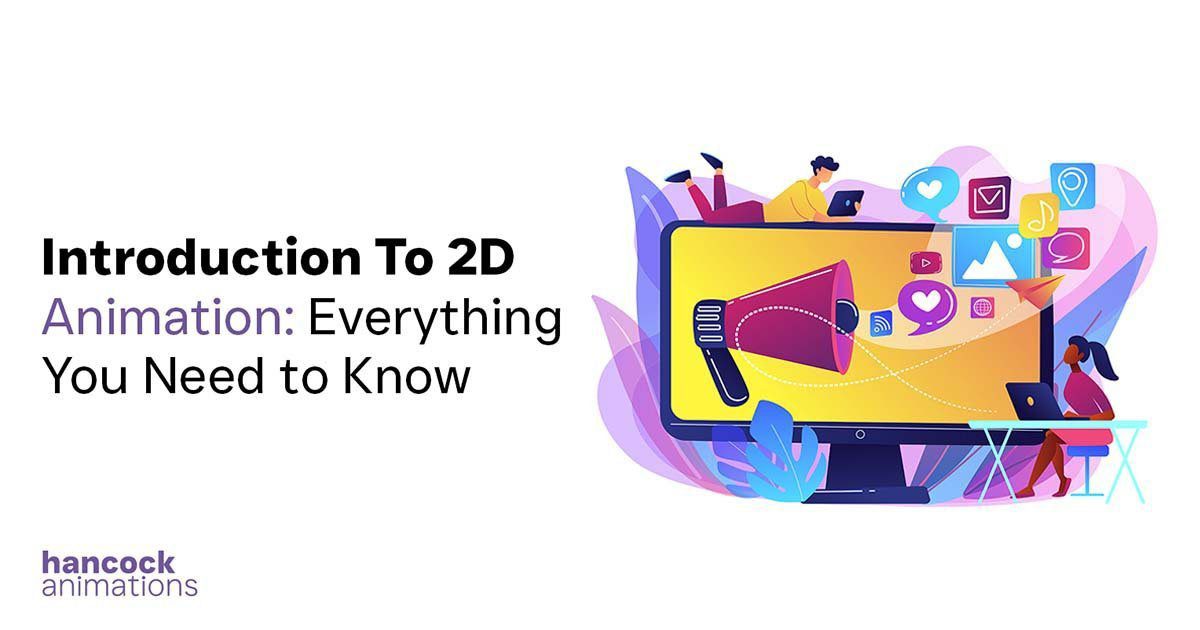
Animation has indeed surged through the world of entertainment with a force comparable to a tsunami. From the beloved classics of Disney to a multitude of children’s television shows and even within the realm of video games, 2D animation has established a prominent presence, captivating audiences of all ages.
It is one of the main animation styles which has been used for years now. The majority of animation companies use 2D animation for cartoons, movies, marketing videos, ads, educational material, presentations, video games, and so on.
Today, video content is so much in demand that every business uses it in their marketing and promotional strategies, as they take your conversion rate up to 20%. To leverage this, many companies opt to enlist the expertise of video animation professionals, whether specializing in 2D animation or 3D animation, in order to enhance their online presence and captivate their target audience.
To provide a comprehensive understanding of 2D animation services and videos, Hancock Animations has crafted an all-encompassing guide. This resource will cover everything from the fundamentals of 2D animation to practical guidance on creating 2D animated videos. So, sit tight and let us roll.
What Is 2D Animation?
Two-dimensional animation, also known as 2D animation, is where your characters and objects are designed in two-dimensional space, meaning that they will only have height and width.
2D animation experts have been using this style since the 1800s. At first, they used to create 2D animation by adding two frames together, in which one hand-drawn picture would follow the other one to show smooth motion, and they used to put 24 frames in a second.
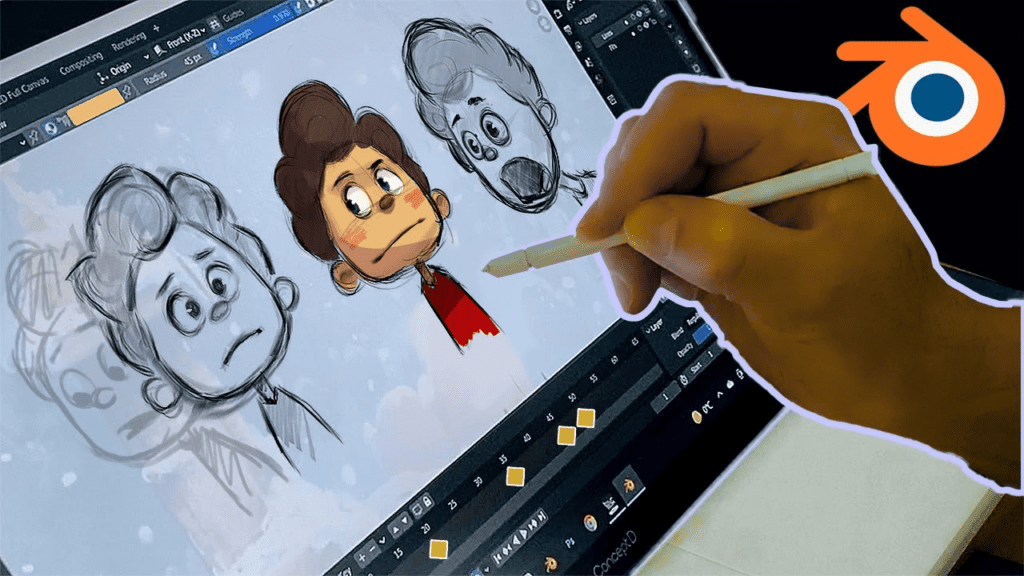
We all know about Disney. It is the top 2D animation company. Movies like Bambi, Cinderella, and Beauty and the Beast are some of the best examples of 2D animated movies, where you get to see good quality and smooth hand-drawn animation.
As time moved forward and technology improved, the hand-drawn animation process shifted to digital with the help of different 2D animation software, which allows you to create characters and backgrounds on a computer and animate them accordingly.
The 3-Step Process Of 2D Animation Production
The 2D animation process is divided into 3 steps: pre-production, production, and post-production. So, let us get into it:
1. Pre-Production
The first step in making 2D animations is called pre-production. In this stage, a 2D animation company does all the planning.
It comes up with the story and writes the script, creates the characters and draws pictures of what the animation will look like, picks the colors to use, makes the backgrounds, and records the dialogues and music.
This is all to prepare for the main part of making the animation, so it’s important to do it well.
For example, a good script should describe everything that happens in the animation visually and in the story. Also, the storyboard is like a picture version of the script. It shows how all the actions and events are arranged in order.
Once the script and storyboard are done, the next step is to create the characters, come up with a background, and finalize the visuals. 2D animation experts first draw rough sketches and then add details and images to polish them.
After the sketches, they pick a color palette for the animation to make it look more realistic and alive. They also suggest different background ideas to show movement and action. Once the backgrounds are done, then these sketches are digitized during the production process.
2. Production
Production is when the 2D animator brings together everything they have created during pre-production to make the animation.
They paint backgrounds and make scenes and characters. Create a basic animation, and then refine it by cleaning up and adding in-between frame colors, and enhance drawings with computer software. Once all of this is done, they combine everything and get it ready to use.
To bring everything together, animators make an exposure sheet that has everything they need to create every scene. It has five parts:
- Actions and timing
- Dialogues and music
- Animation layers
- Backgrounds
- View perspective
After making the basic 2D animation, the next step is to make it look neat and smooth. This is called tracing, and there are two ways to do it: either on a new layer or directly on the same layer with different colors.
There is a technique called inbetweening, which a 2D animator uses to make animations smoother. It involves adding extra drawings between two mainframes.
For instance, if you are animating a bouncing ball, you would draw extra frames between the one where the ball is at its highest point and the one where it hits the ground to show movement.
Once the frames are done, the animator scans them into a computer if they are hand-drawn. Then, they bring together all the visual elements together following the exposure sheet. In the compositing step, experts add backgrounds, frames, sounds, and any needed effects.
This is done with the help of different animation software. Once the compositing is done, the animator renders the scene.
3. Post-production
The final step in 2D animation is post-production. In this phase, they make the animation even better by adding sound effects or recordings to make it more emotional. When the final version is done, the animation is exported in different formats for use.
These are the basic steps one must follow to create 2D animation, which every beginner should grasp. To become an advanced animator, it is important that you delve deeper into the techniques and best methods for creating 2D animations.
Difference Between 2D Animation, 3D Animation, And Stop-Motion
2D animation, 3D animation, and stop-motion are distinct animation techniques, each with its own unique characteristics. Here’s a brief overview of the differences between them:
2D Animation:
- Style: 2D animation involves creating images and sequences in a two-dimensional space. It is characterized by flat, hand-drawn, or digitally illustrated characters and backgrounds.
- Technique: Traditional 2D animation is often done by hand-drawing each frame, while modern techniques involve digital tools and software.
- Examples: Classic Disney movies like “The Lion King” and TV shows like “Tom and Jerry” are iconic examples of 2D animation.
- Flexibility: 2D animation allows for artistic freedom but is generally limited in terms of depth and realism.
3D Animation:
- Style: 3D animation takes place in a three-dimensional space and typically involves computer-generated characters and environments.
- Technique: It requires 3D modeling and rendering software to create and manipulate 3D objects. Animators can control the characters’ movements and expressions in a highly detailed manner.
- Examples: Pixar films like “Toy Story” and video games with realistic graphics, such as “The Last of Us,” are prime examples of 3D animation.
- Realism: 3D animation can achieve a high level of realism and is often used for visual effects in live-action films.
Stop-Motion:
- Style: Stop-motion animation involves physical, tangible objects or puppets. Animators capture a series of individual frames, moving the objects slightly between each frame, creating the illusion of motion.
- Technique: It’s a meticulous process that requires precision and patience. Stop-motion can be done with claymation, puppets, or even everyday objects.
- Examples: “Wallace and Gromit” and “Corpse Bride” are examples of stop-motion animation in film, while “Robot Chicken” is a TV series using this technique.
- Tangibility: Stop-motion animation offers a tactile, handmade feel that can be endearing and charming.
The Different 2D Animation Styles
2D animation covers a wide range of styles and methods. While we have discussed stop-motion as one type, there are numerous more distinctive forms of animation within this category. Here we go:
Flip Book Animation
A flipbook animation is a simple and classic form of animation created by rapidly flipping through a series of hand-drawn images.
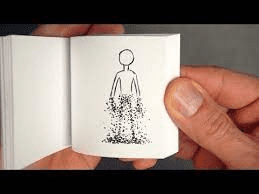
Each image represents a slight progression of a scene or character’s movement. When you flip through these images quickly, the slight changes between them create the illusion of motion.
Cel Animation
Cel animation is an older hand-drawn method that is not used as often nowadays due to the advanced digital animation technology.
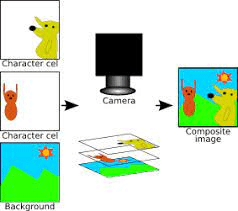
In cel animation, animators draw on transparent sheets called cels. These drawings are later painted and placed on top of a static background sheet. After that, they photograph and swap each cel to show minor movement. This sequence of images ultimately creates the animation you see.
Cel animation allowed various animators to work on different parts of an animation simultaneously.
Plus, you only had to draw and color the static backgrounds once. Using multiple see-through cel layers not only saved time but also enabled the development of more advanced animation techniques.
Digital Animation
Digital animation sticks to the basic animation rules, but the only difference is that it relies on digital tools. Instead of traditional paper or cels, 2D animation experts and their teams use computer software to handle their art, special effects, and background music.

This modern method has completely changed the way we create cartoon characters, and nowadays, most cartoons are made this way.
Auteur Technique
Defining auteur animation is not easy because it’s all about a director’s personal style and how they use animation tools uniquely.
To understand auteur techniques, it would be best to study individual directors and how they express their vision through a series of images. This can inspire you to think about your own style.
Erasure Animation
Erasure animation is a distinctive technique known for its simple style and rough look. It mainly uses paper, a charcoal pencil, and an eraser.
In this method, the animation team works on a single page. Instead of creating multiple drawings for gradual changes, they draw and erase on the same paper, taking pictures in between.
Drawn-on-film Animation
Drawn-on-film is an animation technique where you directly manipulate the film strips to create animation. In contrast, traditional 2D animation captures frames separately and then prints them onto film stock for use.
How To Become A 2D Animator?
The world of animation provides a number of opportunities for 2D animators when it comes to picking a job. Currently, 2D animation experts can work in the film sector, TV, video games, creating apps, and in education.
While the specific job and 2D animation company may have unique demands, there are some basic qualifications that can help you get ready for a career in 2D animation, such as:
- Artistic Skills: Develop a strong foundation in drawing and illustration. Practice sketching and creating 2D characters and scenes.
- Animation Software Proficiency: Familiarize yourself with popular 2D animation software such as Adobe Animate, Toon Boom Harmony, or TVPaint.
- Storytelling Abilities: Understand the principles of storytelling, character development, and plot progression to create engaging animations.
- Understanding of Animation Principles: Study animation principles like timing, spacing, squash and stretch, and anticipation to bring your characters to life.
- Patience and Attention to Detail: Animation can be a meticulous process, so having patience and a keen eye for detail is essential.
- Strong Communication Skills: Effective communication is important when working in a team, as animation projects often involve collaboration.
- Portfolio: Create a portfolio showcasing your best 2D animation work to demonstrate your skills and abilities to potential employers.
- Continuous Learning: Stay updated with industry trends and new animation techniques through workshops, online courses, or self-study.
- Networking: Build relationships with professionals in the animation industry through events, conferences, and online communities to discover job opportunities.
- Flexibility and Adaptability: Be open to working in various industries, such as film, television, video games, and more, as 2D animators can find employment in diverse fields.
Tips And Tricks To Elevate Videos With 2D Animation
Whether it’s 2D animation or any other type of animation, the goal of its creators is to bring it to life and make it captivating.
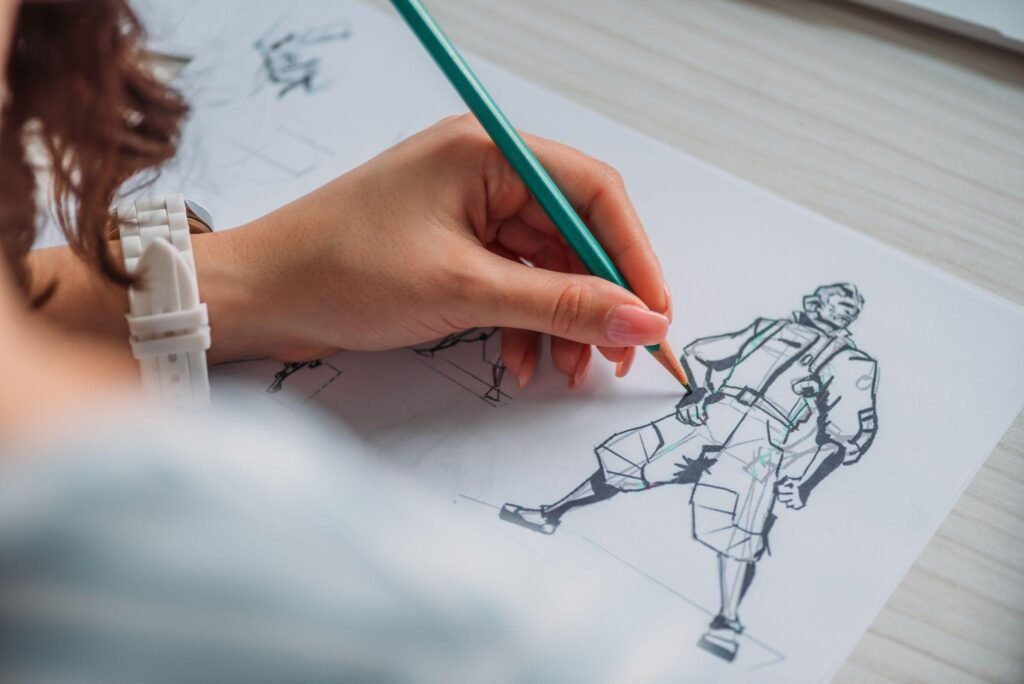
But how can they transform static drawings into something that feels motion and realism? Disney animators Ollie Johnston and Frank Thomas put forward 12 principles of animation to guide this process:
- Squash and Stretch: This principle adds volume and weight to characters as they move.
- Staging: Clearly convey your characters’ intentions through their action and pose.
- Anticipation: It involves hinting at important actions before they occur, giving the audience a clue about what is about to happen.
- Follow Through and Overlapping Action: Pay attention to how different parts of a character’s body move, with some parts continuing to move even after the character has stopped.
- Slow In and Slow Out: To make actions look more realistic, add more frames at the beginning and end of an action and fewer frames in the middle.
- Straight Ahead Action and Pose to Pose: You can choose either method to create animation: drawing key poses first and then filling in the in-between frames or creating scenes step by step.
- Arc: Introduce subtle circular motions into your characters’ actions.
- Timing: Adjust the speed of scenes to create the desired pacing, whether it is slower or faster.
- Secondary Action: Use additional movements to enhance the main action and make it livelier.
- Exaggeration: Apply exaggerated movements to emphasize specific points or ideas.
- Solid Drawing: Despite working in a two-dimensional space, make characters appear three-dimensional and give them a sense of weight.
- Appeal: Craft characters that are visually appealing to capture the audience’s interest.
By adopting these timeless principles, you will soon find people in a difficult situation to spot any difference between your work and the work of a 2D animation expert.
Also, keep exploring various hints and techniques to further improve your abilities and come up with even more impressive animations. Doing so will enable you to have your unique style.
An important tip to keep in mind is to thoroughly map out your 2D animation. Envision how you want to showcase all the scenes and actions, determine the key and supporting movements, flesh out each character, and be sure to note down your ideas.
Also, mastered the art of conveying emotions through facial expressions and body language. To achieve lifelike animation, closely observe and analyze the gestures and bodily motions of real people. Do not hesitate to amplify and infuse added intensity when necessary.
Best 2D Animation Software
The best 2D animation software can vary depending on your specific needs, skill level, and budget. Here are some of the top 2D animation software options available, catering to a range of requirements:
- Adobe Animate (formerly Flash)
- Toon Boom Harmony
- Clip Studio Paint
- TVPaint Animation
- Pencil2D
- Moho (formerly Anime Studio)
- Synfig Studio
- CrazyTalk Animator
- OpenToonz
- Krita
The choice of the best 2D animation software depends on your specific needs and skill level. If you’re new to animation, you might want to start with a simpler tool like Pencil2D or Krita, while more advanced animators might opt for Toon Boom Harmony or Adobe Animate for their feature-rich capabilities. Always consider your budget, intended use, and learning curve when making your choice.
Wrapping Up…
In conclusion, 2D animation is a versatile and captivating form of artistic expression that has stood the test of time. Whether you’re an aspiring animator, a seasoned professional, or simply an enthusiast of visual storytelling, understanding the fundamentals of 2D animation is essential. It allows you to appreciate the rich history and enduring charm of this medium, and it equips you to create your own animations that can entertain, educate, and inspire audiences of all ages. So, let your creativity soar, and let the magic of 2D animation be your canvas for self-expression and storytelling.
Looking to add a touch of magic to your project? Explore our 2D animation services today.
2D animation involves creating two-dimensional images and characters that move within a flat, two-dimensional space. In contrast, 3D animation involves three-dimensional models and environments with depth and perspective.
2D animation is widely used in various industries, including film, television, video games, advertising, e-learning, and marketing.
The time it takes to produce a 2D animation video depends on factors like the length, complexity, and quality of the animation. Simple animations can be created quickly, while more intricate projects may take weeks or even months.
The cost of 2D animation services varies greatly based on factors like the duration, complexity, and expertise of the animators. It’s essential to get a customized quote for your specific project.

